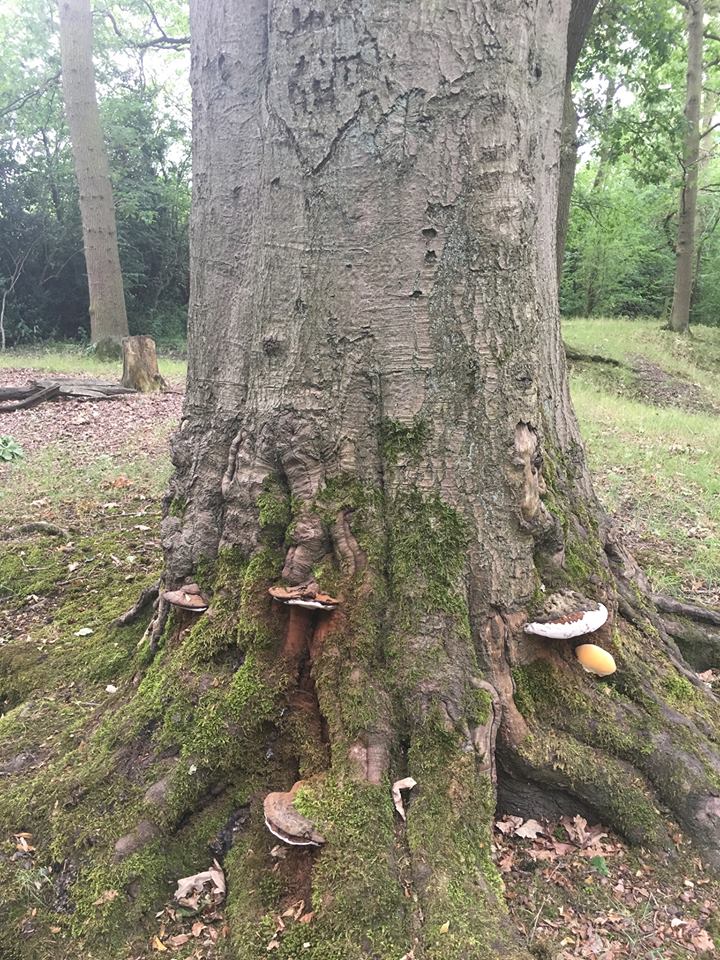
NEWS
Retaining Diseased Trees as Vertical Habitat
We are often engaged to undertake tree safety assessments, the brief being "is the tree going to harm people or property". The answer to this question is a matter of "targets": were the tree to fail what might it hit? Then there is a question assessing the potential risk which the tree might pose where targets exist.
The aim through using this system is not to negate all risk (which would require the felling of all trees), but to reduce it to a tolerable, low level. Although the beech tree noted in the image has a host of decay fungi colonising it's stem and roots, it is in a amenity woodland location with footpaths which can be realigned, so a heavy reduction of the crown to reduce the risk of failure is aesthetically appropriate.
While not always appropriate in a heavily built-up or high-target setting, the creation of "standing habitat". Such standing dead wood is an irreplaceable habitat for invertebrates, birds, bats and even more elusive species: https://arboriculture.wordpress.com/2016/03/13/the-value-of-standing-deadwood-for-fairies/
If you have a tree in decline, contact us for a consultation, and we may be able to provide some novel ecological management options.


